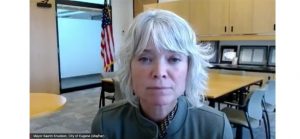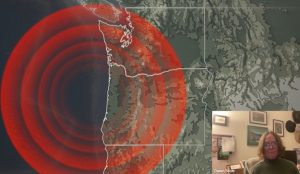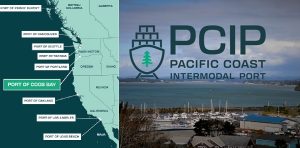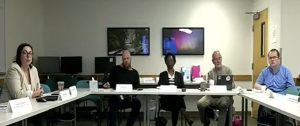EWEB looks ahead to watershed protection for its second source on the Willamette
6 min read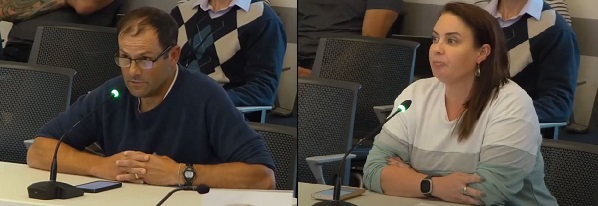
Looking ahead to EWEB’s second source from the Willamette, commissioners consider future watershed protection in the Coast Fork and Middle Fork. At the board meeting Oct. 1:
Jared Weybright (McKenzie Watershed Alliance): My name is Jared Weybright. I am the executive director of the McKenzie Watershed Alliance. I’m here tonight to thank the board and EWEB for their innovative source water protection program. EWEB investments in source water protection have helped leverage over $18 million in restoration dollars flowing through the McKenzie, so these are grants outside of grants that EWEB is sourcing.
[00:00:33] Dedicated funding also provides flexible funding to complete critical pre-project work like design and permitting. This literally shaves years off project development and makes our asks to third-party funding sources extremely competitive.
[00:00:49] EWEB leadership and the work in the McKenzie has helped other NGOs (non-governmental organizations) to begin to take on bigger and more complex projects across the entire Upper Willamette through the newly-formed Upper Willamette Stewardship Network.
[00:01:04] Amanda Gilbert (Coast Fork Watershed Council): Hello, my name is Amanda Gilbert, and I’m the executive director of the Coast Fork Willamette Watershed Council. I am a city of Cottage Grove customer, so I already drink the water that is intended to be coming from the second source.
[00:01:17] I would like to encourage the council to expand the spending to both the Middle Fork and Coast Fork once the second source has gone through.
[00:01:31] Frank Lawson (EWEB, general manager): I know commissioners did want to have at least a discussion to understand where we’re at with the watershed recovery plan and program and fee. The fee expires in June of 2026. We still have some ongoing commitments we’re not recommending any early termination of the fee because of the commitments that we have, but feel like we’re in appropriate position to probably—right around the timing of the end of the fee—look at a watershed protection plan which would be a go-forward plan based on risk assessments and likely would include both the McKenzie and the Willamette.
[00:02:18] I wanted to distinguish between, make it pretty clear there’s a difference between, a fee and a fund. You can create funds and part of what this fee approach did was it created a fund that was flexible within the purposes of, in this case, watershed recovery.
[00:02:36] How you actually finance a fund can vary. We can use alternative forms of financing. We can look for grants. We can create that through the general rate base. But it is different between a fee and a fund. So just wanted to differentiate between those two.
[00:02:55] John Barofsky (EWEB commissioner): Sitting on the (McKenzie) Watershed Council for the last three and a half years, I’ve seen the real success of this fee. I’ve seen the opportunity that we had to leverage and have those dollars available.
[00:03:06] I think we’ve got a great story to tell with that. I think that if we wanted to move forward and continue a fee for source protection, we’ve got a good story to tell and a track record to show how we’ve done it. Also the fact that the Upper Willamette Soil and Water District does now have a tax base to it. So they’ve got dedicated funding that are going into these watersheds as well. It’s kind of a three-prong approach as far as being able to go after those grants and being able to hire the people and the project managers and the contractors to do the work.
[00:03:45] It’s like we are in such a great position, partially because of this fee, but also because of the work of our partners that are going forward. So I would be in favor of looking at this going forward as we get closer to the fee sunsetting, doing an educational reach-out to our community and our customers, showing them the work that we’ve done and the opportunities that we have for the whole watershed.
[00:04:14] Mindy Schlossberg (EWEB commissioner): I know it’s really not on the agenda that we’re going to be debating or discussing this fee. But I feel like we enacted this fee in the wake of a disaster to fulfill a need that we saw at the time. And we were already doing source protection work. And perhaps maybe what we’ve learned through this process is there’s more opportunity to do different kinds of source protection work.
[00:04:37] But I think if we enact a fee on our second source, it’s really just a rate increase because the fee was like a short-term, targeted way to invest in recovery. So I think that if we want to budget more towards source protection, that’s one thing, but I just feel like if we do a fee, it just feels like it’s not really an honest way to go about funding that work.
[00:05:12] Sonya Carlson (EWEB commissioner): I agree with what Mindy said on it. It does feel a little—we need to tread lightly there. But I also do believe that the work that we’ve done up there is absolutely necessary, and that we’ve done a great job leveraging an investment to get other dollars back into the state that we typically leave and go to other opportunities.
[00:05:34] So I’m glad that we’re doing this work, and I look forward to this discussion around rate design, and perhaps we can put a pin in that thought for future conversations around rate design and whether this is a fee or not.
[00:05:49] Matt McRae (EWEB commissioner): As someone who’s worked on wildfire recovery in the McKenzie, it’s been really helpful to have EWEB right there with resources to be able to make things happen. So just from my work life, it’s been amazing to watch what EWEB is capable of.
[00:06:05] I guess I would propose that we have a short-term, limited to five years or something on that order, to make a quick upfront investment in the two watersheds that we’re going to begin taking water from.
[00:06:19] And I also would propose that we wait until this current fee ends to begin a new one, that we not have them overlap. And it feels like to me that being able to forecast for our partners that we are going to be collecting these funds and we are going to put some funding aside for a short duration for short-term opportunities for leveraging grants and taking opportunities to purchase land, that having more than just a few months of headway for them to anticipate that would be helpful.
[00:06:54] John Brown (EWEB commissioner): We have to look at this as a holistic approach, rather than just say, ‘Let’s have a fee right now.’ We’ve got dairies up there, we’ve got urban runoff, we’ve got Short Mountain, we’ve got a whole lot of sources of pollution that we don’t have on the McKenzie.
[00:07:06] And so before we go do this, I think if we’re going to do it, we need to do it right, and better late than wrong, in my opinion. I don’t think right now that we start talking about extending this fee.
[00:07:17] That’s fair because you’ve got to look what we’re doing to the water base for the next five to ten years, just to fund the second source, and the second source isn’t going to be running at full capacity. So we’re at seven million gallons a day, which is a third of our capacity.
[00:07:30] And so I’m just thinking, holistically, that I’m not opposed to it, but I want, for me, I want more information about why and how and what does this do, because it compounds that rate increase and affordability factor is really getting, you know, back home, ‘Death by a thousand cuts.’ We’re raising rates, we’ve raised rates, and we’re going to raise them significantly. So I’m not opposed to it, but I need more information before I support it.
[00:07:59] John Q: As Eugene moves from a single water source in the McKenzie to a second source on the Willamette, attention shifts to the needs of two new watersheds: the Coast Fork and the Middle Fork.
Images: Jared Weybright and Amanda Gilbert speak during the Oct. 1, 2024 EWEB board meeting.
